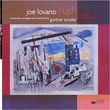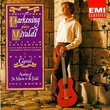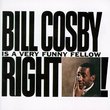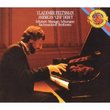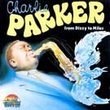| All Artists: Garth Knox, Philippe Muller Title: Arnold Schoenberg: Suite, Op. 29, for 2 Clarinets, Bass Clarinet, Violin, Viola, Cello & Piano / Verklärte Nacht, Op. 4 (Sextet for 2 Violins, 2 Violas & 2 Celli) - Ensemble Intercontemporain, Pierre Members Wishing: 0 Total Copies: 0 Label: Sony Release Date: 7/13/1993 Genre: Classical Style: Chamber Music Number of Discs: 1 SwapaCD Credits: 1 UPC: 074644846522 |
Search - Garth Knox, Philippe Muller :: Arnold Schoenberg: Suite, Op. 29, for 2 Clarinets, Bass Clarinet, Violin, Viola, Cello & Piano / Verklärte Nacht, Op. 4 (Sextet for 2 Violins, 2 Violas & 2 Celli) - Ensemble Intercontemporain, Pierre
CD DetailsSimilarly Requested CDs
|
CD Reviews5-Stars Just for being in Print... Sébastien Melmoth | Hôtel d'Alsace, PARIS | 01/07/2006 (5 out of 5 stars) ". With the dearth of Schoenberg recordings, gotta give this CD 5-stars simply for being in print. Boulez and the Ensemble Intercontemporain are great. The disc has the Verklärte Nacht curse--that is, nearly every Schoenberg CD has Verklärte Nacht on it! However, this features the original sextet version which is interesting for the timber alone. Cf. Brahms' two string sextets, and Reger's if you can find it. The Suite for septet, however, is quintessential Schoenberg and must not be missed. Razor-sharp 12-tone hardcore work, features curious sonic effects with the three clarinets and specialized techinques with the three stringed instruments: col legno (using the wood of the bow for tapping or bowing on the strings or body of the instrument); glissandi (sliding down the strings); extensive pizzicato (plucking the strings), etc. Noted old binary dance steps give the work the appearance of something like Decadent/Expressionistic Austrian jazz: very scary, and very Schönbergian. See: Schoenberg: Suite / Wind Quintet for an excellent Septet with the great Wind Quintet. Was out of print; recently reissued. ." The beauty of bleakness Jacques COULARDEAU | OLLIERGUES France | 03/15/2009 (5 out of 5 stars) "The Suite, Op. 29, is a world in itself. It is absolutely harmonious and even melodious, ,but harmony and melody have been put upside down and right side left. Some will say it is right side wrong, but forgive them because they don't know what they are talking about. It is true he does not work on the basic notes of the scale but rather on their antagonistic second tier notes, background degrees. To end up on another note than the tonal sounds awkward, unbalanced, chaotic, but Schoenberg thus shows, demonstrates and illustrates the fact that all the music before him is just a convention that has been elaborated over some thirty centuries and that it has no naturalness at all. All music is man-made and then it can be de-constructed, re-constructed and even manipulated. Schoenberg thus manipulates tonal notes and basic rules dealing with them, but he also manipulates intervals and systematically works with undesired intervals, supposedly unharmonious intervals, both within the musical line of one instrument, or between the musical lines of two instruments supposedly playing together and there they definitely play one against the other in the orchestra. Chaotic they say? Absolutely not, except if you take chaotic in the meaning any physicist is going to give to that word when dealing with Brownian movement. But that chaos creates the most stable and ponderous, forbidding and imposing matter that can exist in the world. Schoenberg just implements that chaos to music and if you listen to it in order to rebuild the experience you may have in real daily life where everything is chaos and yet order at a higher level over this chaos you get fascinated and enthralled, but also awed and impressed. The piece entitled "Verklärte Nacht". Quite a different music there. Languorous, languid, mournful, lamenting with violins that can never stop crying their notes through the night, and at times that very languidness produces an excited state both strident and heavily rhythmic and Schoenberg achieves what only the Europeans could produce in that time when mono-rhythmic Western music was transformed in the USA and America at large by the multi-rhythmic music from Africa, of the slaves. That modern music, and this piece is here absolutely typical, develops a poly-rhythmic force by having the various instruments, the various melodious lines follow different rhythms. That creates some chaotic force, some force that seems to surge from within the sounds themselves, from the depth it creates in the music. The rhythms can be expressed by simple tempo of a musical line and its strong notes, but it can also be artificially created by some emphatic elements used to pound onto our heads, to beat down upon our vital rhythms, that of the heart and that of the brain. Strangely enough some moments of rhythmic tension boost our own inner rhythms. At other moments the violins create a vast movement gliding over the chaos, surfing on the waves of that untamed and unleashed chaotic mental ocean, and vision, and I should say visions, because every minute evokes a full situation or a complex clash or confrontation, or even a scrutinizing glance that penetrates the multiplicity of reality and tries to capture the various beats or paces. The text given along with this piece is nothing but the source of Schoenberg's inspiration but is not used in the music itself. The three closing pieces are so short. But they are brutally going against the grain of classical rules and harmony. And yet at times an instrument tries a sad and slow solo against that disharmony creating then a surrounding environment the water of some fishbowl in which the erratic notes and rhythm swim happily, or at least we want to believe they are happy.
Dr Jacques COULARDEAU, University Paris 1 Pantheon Sorbonne, University Versailles Saint Quentin en Yvelines, CEGID" |

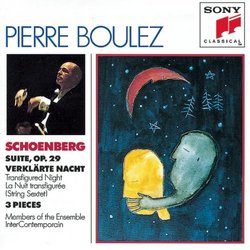
 Track Listings (8) - Disc #1
Track Listings (8) - Disc #1
